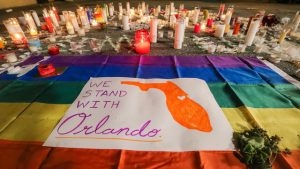Introduction
- For the past several decades, the world has become engaged in a conversation about homosexuality
- Individuals and activist groups have appealed to their governments around the world, demanding equal rights to love who they choose
- Within the past several years, many governments have repealed homophobic laws or created legislation protecting the rights of the LGBTQA community
- However, the world is still hostile towards people of different sexualities, regardless of the legal progress we have made
- It is still dangerous to be open about your sexuality
- The world wasn’t always this way
- Before the rise and spread of Western culture and monotheistic religions like Christianity, Judaism, and Islam, the majority of the world looked at homosexuality as a normal and natural part of life
- All of the major civilizations of the ancient world were inclusive of different sexualities
- We live over the ashes of a world that understood that love and gender are not black and white concepts
- Let’s take a trip around the world
- Human Rights Watch is an advocacy organization that brings attention to issues for the LGBTQA community
- In September 2014, 7 men were arrested for “inciting debauchery”
- They were suspected of performing a same sex marriage
- The Egyptian government has forced those arrested for debauchery to undergo anal medical examinations, where men are “checked” to make sure they haven’t engaged in homosexual activity
- Despite there being no law banning homosexuality, people convicted of debauchery are sentenced to up to 8 years of jail time
- Homosexuality and gender fluidity were normal parts of Egyptian life
- The gods regularly shifted gender and engaged in same sex relationships
- Horus and Seth
- Not a romantic relationship, as they were both trying to prove the other was the “passive” member
- The god’s weren’t the only ones to accept same sex relationships
- Tombs of the pharaohs and prominent Egyptians depicted normal life, and many of them showed homosexual relationships
- Niankhkhnum and Khnumhotep were servants to the Pharaoh, and were buried in a conjoined tomb
Today: China
- China decriminalized homosexuality in 1997 (“hooliganism”)
- Removed it from the list of mental illnesses in
- CNN published an article in December of 2014 describing public sentiment towards homosexuality
- “You only have one child so you want your child to be ‘normal’ like everybody else”
- Xiaogang Wei, Beijing Gender Health Education Institute
- “You only have one child so you want your child to be ‘normal’ like everybody else”
- The article continues, claiming many members of the LGBTQA community get married to the opposite gender anyway, either to pretend to be straight or to produce a child
- As of 2013, Chinese clinics still offered “shock treatment” as a cure for homosexuality
- Confucianism was tolerant of homosexuality and same sex relationships
- According to WomenOfChina, The emperors of the Han dynasty (202 BCE – 220 CE) were often openly gay and kept male lovers throughout their rule
- Emperors Wu and Wen were both known to be gay
- Emperor Ai had slept with his male servant – when he got up he ripped his sleeves so as not to disturb the other man
- “Relationship of the cut-off sleeves” stems from this story
- Galeote Pereira, “The greatest fault we do find among the Chinese is sodomy, a vice very common in the meaner sort, and nothing strange among the best”
- The Origins and Role of Same-Sex Relations in Human Societies

Today: The Americas
- Argentina Brazil, Colombia, and Uruguay have passed legislation allowing gay marriage
- Many Latin American countries have tried legally protecting LGBTQA rights
- However, it’s not enough
- According to the Inter-American Commission on Human Rights, 600 people in Latin America were killed between January 2013 and March 2014 from homophobic violence
- Joel Molero, a 19 year old Peruvian man was murdered and dismembered in for being openly gay in November of 2012
- According to HuffPost, information not released by the press until June of 2013
- In North America, the US and Canada have legalized gay marriage
- Parts of Mexico allow it

- Parts of Mexico allow it
- Despite legal changes, discrimination still pervades everyday life
- June 12, 2016 49 people were killed at the Pulse nightclub in Orlando
- One of the worst shootings in our history
- Approximately 20% of hate crimes in the US in 2012 were on the basis of sexual orientation
- I’ve witnessed people harassing each other in high school for their sexuality
Tribal Americas

- Many native South American tribes included same sex relationships in daily life
- The Moche people of Peru (0 CE – 800 CE) left erotic pottery depicting same sex couples
- The Incan Empire considered both homosexuality and premarital sex normal parts of life
- A fact the conquistadors were horrified to find out
- In “The Construction of Homosexuality,” David Greenberg discusses the commonhomosexuality of the Mayans, as described by Spanish missionaries
- Most Native American tribes were accepting of homosexuality
- Navajo tribes considered gay marriage a normal union
- “Common law marriages” applied to everyone
- “Two spirit” is a common term
- You are blessed to have the spirit of male and female
- LGBT tribe members often became religious leaders for that reason
- You are blessed to have the spirit of male and female
- Crossdressing and androgyny were both totally acceptable
- Multiple African nations have tried to claim that homosexuality is a Western concept brought by slavers and colonists to Africa
- Bisi Alimi is a Nigerian journalist – he has written about homosexuality in precolonial africa
- He was forced to emigrate to the UK after receiving death threats for revealing his sexuality
- South Africa is the ONLY African country to legalize gay marriage
- Homosexuality itself is still illegal in OVER 30 African countries
- Jailing, Beatings, and occasionally the death penalty are CURRENT punishments for homosexuality
- Bisi Alimi argues against his government, reminding them that the Yoruban word “adofuro,” meaning homosexuality, has existed long before the colonial era
- The men of the Zande warrior tribe often married younger men
- Lived in the region that is now Sudan, where being convicted of homosexuality often means the death penalty
- King Mwanga II of Uganda was well known for being bisexual – he was open in his rebellion against the Christian colonists who tried to criminalize homosexuality in Ugandan culture
Conclusion
- Egypt, China, The Americas, and Africa were only 4 of the many many regions that accepted homosexuality as a normal part of life
- Ancient Rome, India, Russia, and all of the other hubs of culture today were inclusive of different sexualities
- As of right now, only 26 countries have legalized gay marriage
- There are 195 countries in the world
- Hundreds of people are murdered every year for being open about their sexuality
- Despite the progress that anti-discrimination laws have made, the LGBTQA community is still in physical and emotional danger from the rest of the world
- Laws and policies will not fix the situation – we need social change to truly make a difference
- We need to go back to our roots
- Every ancient civilization was tolerant of homosexuality,including same sex relationships as normal parts of everyday life
- Gender did not have to be a black and white concept, and neither did sexuality
- When you are sick, you try to rid yourself of the disease
- Homophobia is a disease in our global community, and we must get rid of it
- The ancients recognized the true rules of nature – love is love, regardless of gender
- Let’s take an active role in changing the world perception, and act like the ancients


















 D.C.. The women rehearsed the piece online, preparing for the event. The
D.C.. The women rehearsed the piece online, preparing for the event. The  American women to speak out and become engaged in our communities. By acknowledging the fears and doubts we have about doing this, the song becomes relatable to its audience, and allows us to hear the message of her song. She promises that we are not alone in our search for equality, and that when we feel isolated and alone, there will be someone else who is fighting alongside us. With every chord we are encouraged to take the risk, fight for our beliefs and above all, to make our voices heard.
American women to speak out and become engaged in our communities. By acknowledging the fears and doubts we have about doing this, the song becomes relatable to its audience, and allows us to hear the message of her song. She promises that we are not alone in our search for equality, and that when we feel isolated and alone, there will be someone else who is fighting alongside us. With every chord we are encouraged to take the risk, fight for our beliefs and above all, to make our voices heard.

